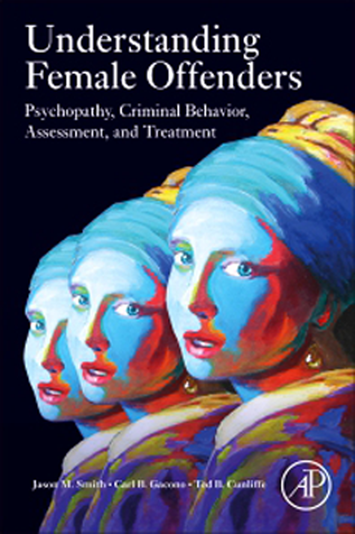
Like buses, books about female psychopathy often seem to arrive at my door in twos and threes. However, this one is unusual because its authors (all experienced clinician researchers) have pioneered the use of the Rorschach test as a personality assessment tool, especially in psychopathy. Their chief theme is that psychopathy exists in women and can be reliably detected with the Rorschach – perhaps more reliably than using Robert Hare's Psychopathy Checklist-Revised (PCL-R), which is usually seen as the gold standard in this context. They make important and useful points about the limitations of much research on psychopathy, especially research that is not grounded in the realities of crime and criminals and much of which is based on self-report.
Despite what one might think from watching TV and the heaving true crime shelves in bookshops, there are many debates about psychopathy: and psychopathy in women is a key one. This is partly because the absolute numbers of rule-breaking women are so small; few women break the criminal law at all, let alone violently. Only 5% of the prison population in England and Wales are women; and of those few thousand women, only about 30% are sentenced for crimes of violence. It's not that women can't be criminal or violent, it just seems to take more for them to be so. Why this should be is a Nobel prize-winning question beyond the scope of this book review.
So, the work of these authors can only apply to a tiny number of highly selected atypical women; and it is notoriously difficult to make empirically robust assertions about highly unusual people. Research on unusual offenders is hard to do without biases creeping in, and the authors devote a chapter to the multiple forms of bias that can influence the study of female psychopathy, and what might be done to minimise it, especially in terms of sample selection and methodology.
The authors have a nice style and are clearly devotees of Arthur Conan Doyle and his indefatigable detective. They have obviously had a frustrating time getting their work on the Rorschach published in peer-reviewed journals and this book is their response to this. It is probably only of specialist interest to those working in prisons and secure units for women; and in the time-poor NHS, I doubt we will be using the Rorschach anytime soon. I also couldn't help but notice that in a book that discusses the malign influence of bias on research in psychopathy, especially in women, at no point did the authors offer a reflection on what makes three men devote their working lives to studying a rare group of women; or whether they might bring a masculine gender role bias to their work. It's just a thought.
Declaration of interest
None.




eLetters
No eLetters have been published for this article.